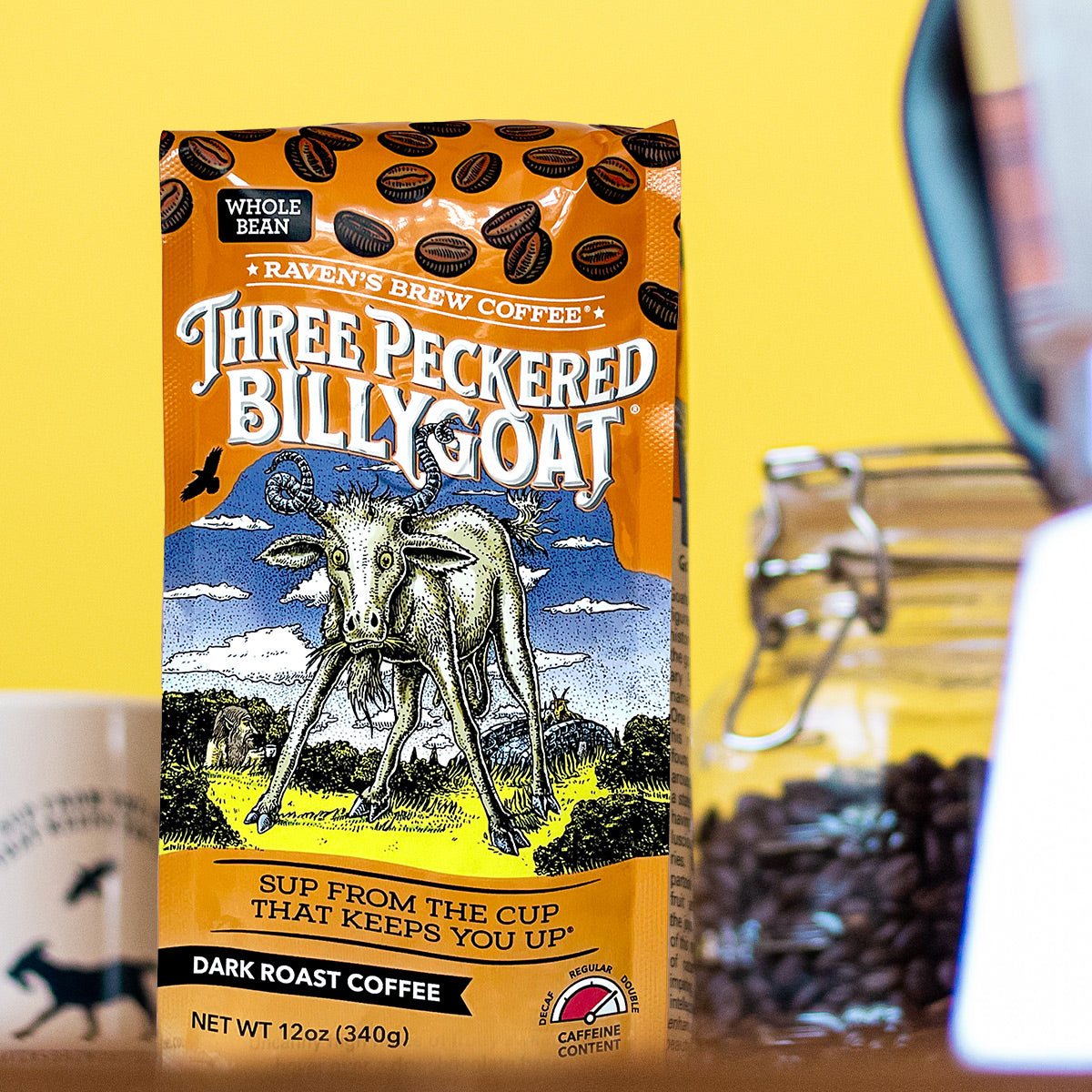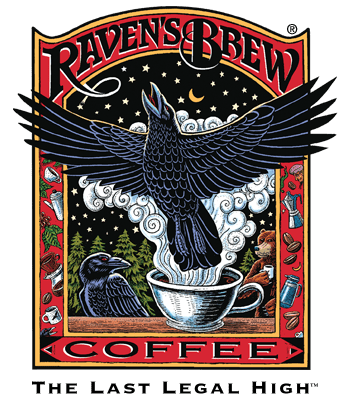At Raven’s Brew Coffee® we believe there is simply, and properly, no accounting for taste. We strive to offer a variety of blends that impress the senses in different ways. But as any coffee aficionado knows; the sourcing, blending and roasting of beans are not the only things that affect your cup of coffee. Once we are done with our part, we hand our creations over to you, the home brewer, to turn our beans into a cup of dark liquid bliss!
There are several key components of the coffee brewing process that influence the end result in your cup. A comprehensive understanding of how these factors affect your drink is key to getting the perfect cup for your personal tastes. We encourage you to experiment! We can make recommendations about what works for us but in the end it is up to you to decide how you like your coffee best and how to get there. This post is intended as a starting point for your coffee brewing journey—we hope that it inspires you to try something new, or to refine what you are already doing at home.
Grind it up!
If you grind your coffee yourself, this is the first thing to consider. The finer your grind, the more extraction will occur in the same amount of time. Different brew methods have different recommended grinds that compensate for other variables so that you don’t get over or under- or over-extracted coffee: a fine grind for espresso considers the speed and pressure at which the water passes through the coffee; a course grind for French Press considers the longer duration of extraction. The terms commonly used to describe grinds—“fine”, “medium” and “coarse” for example—still have variations within them. A good quality grinder can have 20 or more settings for you to play with. If you want bold flavor and heavier body in your cup, consider adjusting your grind slightly finer. If you think your coffee is over-extracted, go coarser.
Check your Ratio!
There are two substances combining in your cup of coffee—the coffee grounds and water. Changing the quantity of one or the other will change the result in the cup. The ratio is the proportion of these two to each other. The more coffee in relation to water, the more developed you will find the drink in your cup. The more water to coffee, the less developed. Again, there are broad recommendations on how to combine for different brew methods. But this is something you can easily adjust in small increments to experiment. A note on measuring your coffee—the only accurate way to do this is by weight, since different beans and roasts have different densities. However, if you dial in a preference by weight and then measure the volume (for example with scoops), it should be easy to get the same results with the same coffee.
Time is of the essence!
The amount of interaction between the coffee grounds and water you are combining is, of course, influenced by the time they spend in contact with each other. The longer they are in contact, the more the water can extract the chemical compounds that create flavor from the coffee grounds . Even the best coffees can be over-extracted, so it is important that the duration of your brew is correct to the method you are using. Other factors like heat and pressure also affect extraction, so there are different durations recommended for different brew methods. Hot, high-pressure espresso is over in less than a minute; whereas cold, low-pressure cold brew can be left overnight or longer. Remember that you can also affect the duration of drip and espresso using variations in grind size—it will take longer for water to pass through a finer grind!
Check your Temperature!
The Specialty Coffee Association recommends an optimum temperature of between 195 and 205 degrees Fahrenheit for brewing hot coffee. Colder water takes longer to extract flavors from the coffee grinds, and hotter water can over-extract and cause burnt, bitter flavors. If you are brewing manually and do not have access to a thermometer to measure your water temperature, simply bring your kettle to a boil, remove it from the heat source, and let it stand for a minute to cool to the optimum temperature. The exception to this standard is, of course, cold brew, where you compensate for the cold water with a much longer extraction time.
Feeling Agitated?
The last key factor that affects the extraction of your coffee is physical movement, or agitation, of the grinds in the water. An example of this is stirring the infusion. Agitation increases the extraction of coffee into water, and with some immersion brewing methods like French Press you can physically stir the coffee and water to affect the level of extraction. Remember that pouring the water over the coffee grounds causes agitation itself, for example, with drip or pour over.
How you make your coffee, and how you like it to taste, is ultimately up to you. We hope that the information here helps you to make informed decisions and encourages you to investigate the different elements of the brewing process and achieve the ultimate cup of coffee! With Raven’s Brew Coffee® beans of course. There’s a blend (or many) for everyone! Check them out!








